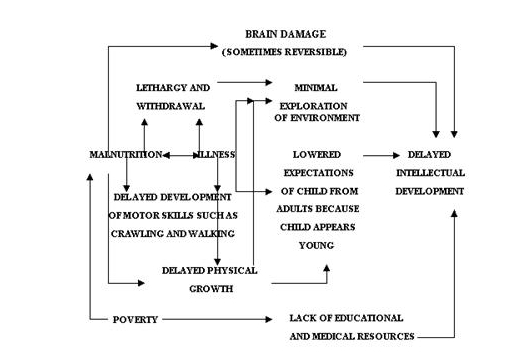Significantly high percentages of poor children suffer from deficient dietary needs and have intakes below 70 percent of the Recommended Daily Allowances for 14 out of 16 vital nutrients.
This type of undernutrition triggers an array of health problem in children, many of which can become chronic. It can lead to weight loss, stunted growth, weakened resistance to infection and in the worst cases, early death. The effects can be particularly devastating in the first few years of life, when the body is growing rapidly and the need for calories and nutrients is greatest.
Malnutrition and undernutrition in early life can also limit long-term intellectual development. Several of these problems can lead to irreparable damage to young children, yet increases in wholesome nutritious food, may reserve many of the damages.




